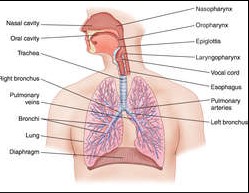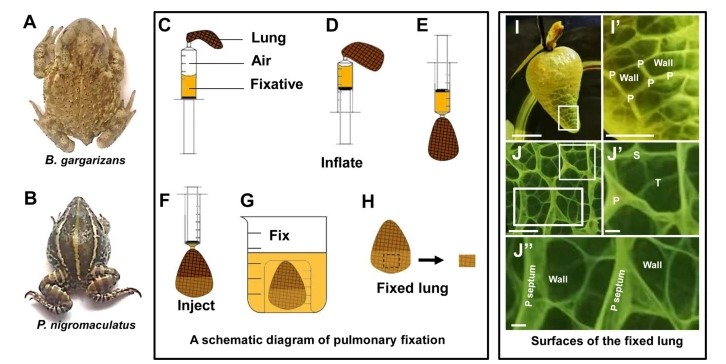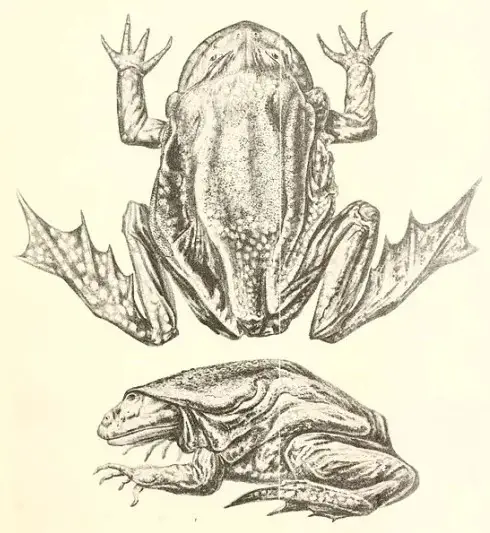Respiration is a fundamental biological process, essential for the survival of nearly all living organisms. It involves the exchange of gases between an organism and its environment, facilitating the conversion of oxygen and nutrients into energy. While most are familiar with breathing through lungs, the natural world presents a diversity of respiratory mechanisms, each tailored to the unique needs and habitats of different species. This article focuses on two distinct methods: cutaneous and pulmonary respiration.
Cutaneous respiration refers to gas exchange through the skin, a process primarily observed in certain amphibians and small mammals. Pulmonary respiration, on the other hand, involves the exchange of gases through lungs and is common in most terrestrial animals, including humans. These methods differ significantly in their mechanisms, efficiency, and the conditions under which they are most effective.
Understanding the distinction between cutaneous and pulmonary respiration not only highlights the adaptability of life forms to their environments but also sheds light on the evolutionary innovations that have enabled species to exploit diverse ecological niches. By comparing these respiratory strategies, we gain insights into the complexity of life and the myriad ways through which organisms meet their metabolic needs.

Basics of Respiration
Definition and Significance
Respiration is a vital process for all living organisms, facilitating the exchange of gases—oxygen (O2) and carbon dioxide (CO2)—between an organism and its environment. This biological function is crucial for energy production, enabling cells to produce ATP (adenosine triphosphate), the energy currency of the cell, through cellular respiration.
Overview of Biological Respiration
At its core, biological respiration involves two primary actions: the inhalation of oxygen from the environment and the exhalation of carbon dioxide produced as a waste product. This process is essential for maintaining the homeostasis of oxygen and carbon dioxide levels in the body, critical for the survival and proper functioning of cells.
Types of Respiration in Organisms
Respiration varies significantly across the animal kingdom, primarily categorized into pulmonary respiration and cutaneous respiration. While the former involves lungs to facilitate gas exchange, the latter utilizes the skin. These methods reflect the organism’s evolutionary adaptations to their specific habitats.
Pulmonary Respiration Explained
Definition and Process
Pulmonary respiration is a method where lungs are used to exchange gases between the blood and the air. Air is drawn into the lungs, where oxygen diffuses into the blood, and carbon dioxide diffuses out to be expelled from the body.
Organs Involved
The primary organs include the lungs, trachea, bronchi, and diaphragm. These components work together to ensure air is efficiently transported to and from the lungs for gas exchange.
Role in Gas Exchange
This process is crucial for delivering oxygen to tissues and removing carbon dioxide. Oxygen is necessary for cellular respiration, where it helps convert nutrients into ATP, while the removal of carbon dioxide prevents toxicity.
Advantages and Limitations
Pulmonary respiration allows for a high rate of gas exchange, suitable for active and large organisms. However, it requires a complex respiratory system and is limited to environments where the air is accessible.
Cutaneous Respiration Uncovered
Definition and Process
Cutaneous respiration involves the direct exchange of gases through the skin. This method relies on a moist skin surface where oxygen can dissolve and diffuse into the blood, and carbon dioxide can be expelled.
How It Differs from Other Forms
Unlike pulmonary respiration, cutaneous respiration does not involve lungs or airways, making it simpler and more direct. It’s especially effective in moist environments where lungs might not function efficiently.
Organisms Relying on This Method
Many amphibians, such as frogs and salamanders, and some fish utilize this form of respiration. It allows them to absorb oxygen directly from water or moist air.
Advantages and Limitations
The primary advantage is its simplicity and the ability to respire in water. However, it’s less efficient than pulmonary respiration, limiting its effectiveness to smaller organisms or those in wet habitats.
Comparative Analysis
Side-by-Side Comparison of Both Types
- Pulmonary Respiration: Involves lungs, efficient in dry and terrestrial environments, suitable for larger organisms.
- Cutaneous Respiration: Involves skin, efficient in moist environments, suitable for smaller or aquatic organisms.
Key Differences in Process and Efficiency
Pulmonary respiration is more complex but more efficient in oxygen uptake, especially necessary for active or large organisms. Cutaneous respiration, while simpler, offers limited oxygen uptake but provides versatility in aquatic or damp conditions.
Environmental Adaptations
The choice between pulmonary and cutaneous respiration reflects an organism’s adaptation to its environment. Pulmonary respiration thrives in terrestrial settings, while cutaneous respiration is a boon in aquatic or humid conditions, demonstrating nature’s versatility in supporting life across diverse habitats.

Significance in Various Species
Role in Amphibians
Amphibians, such as frogs and salamanders, exhibit a remarkable reliance on cutaneous respiration. Their skin, highly vascularized and moist, serves as a primary site for gas exchange, crucial for their survival in both aquatic and terrestrial environments. This dual-life approach allows them to exploit a wider range of habitats compared to species confined to a single respiratory mechanism.
Importance in Mammals
In contrast, mammals, including humans, depend predominantly on pulmonary respiration. The complexity of mammalian lungs, with their extensive surface area and alveolar structure, facilitates a high efficiency of oxygen uptake and carbon dioxide expulsion. This respiratory method is pivotal for sustaining the high metabolic rates characteristic of mammals, supporting activities from resting to intense physical exertion.
Unique Cases and Exceptions
Some species defy the typical respiratory classifications. The Australian lungfish, for example, possesses both lungs and gills, enabling it to survive in oxygen-poor waters and on land for short periods. This versatility showcases nature’s ingenuity in ensuring survival through diverse respiratory adaptations.
Factors Influencing Respiratory Methods
Environmental Factors
The surrounding environment plays a critical role in determining an organism’s respiratory method. Aquatic animals favor gills or cutaneous respiration for extracting oxygen from water, while terrestrial animals have evolved lungs to utilize atmospheric oxygen. The availability of water or air, temperature, and habitat type all influence respiratory adaptations.
Physiological Factors
An organism’s size and activity level significantly affect its respiratory method. Larger animals or those with higher activity levels require more oxygen, thus favoring the efficiency of pulmonary respiration. Conversely, smaller, less active species can efficiently utilize cutaneous respiration.
Evolutionary Adaptations
Evolutionary history has tailored species’ respiratory mechanisms to their ecological niches. Through natural selection, species have developed respiratory systems that optimize oxygen uptake and carbon dioxide removal in their specific environments, demonstrating the diversity of life.
Health Implications
Conditions Affecting Pulmonary Respiration
Asthma, chronic obstructive pulmonary disease (COPD), and lung cancer are among the conditions that can impair pulmonary respiration. These illnesses can significantly reduce the lungs’ capacity to exchange gases, leading to decreased oxygen levels in the blood and overall diminished health.
Conditions Affecting Cutaneous Respiration
For species relying on cutaneous respiration, skin diseases or environmental pollutants can obstruct gas exchange. Amphibians, in particular, are vulnerable to habitat contamination, which can impair their skin’s ability to function properly, posing a significant risk to their survival.
Impact on Overall Organism Health
The efficiency of gas exchange directly impacts an organism’s health and vitality. Impairments in respiratory function can lead to a cascade of health issues, underscoring the importance of maintaining a healthy respiratory system for overall well-being.
Research and Discoveries
Recent Studies on Respiratory Mechanisms
Recent research has shed light on the genetic foundations of respiratory adaptations, offering insights into how species have evolved to meet their oxygen demands. Studies on amphibians have particularly contributed to understanding how cutaneous respiration supports life in varied environments.
Innovative Adaptations in the Animal Kingdom
Innovations, such as the re-discovery of species thought to solely rely on gills or lungs but also utilizing cutaneous respiration, highlight the adaptability of life. Research into the lungfish and certain reptiles underscores the evolutionary creativity in ensuring survival across different environmental conditions.
Future Directions in Respiratory Research
The future of respiratory research promises advancements in biotechnology and medicine, inspired by natural adaptations. Understanding the molecular mechanisms behind these diverse respiratory processes could lead to novel treatments for human respiratory conditions and further our comprehension of life’s resilience.
FAQs
What is cutaneous respiration?
Cutaneous respiration is a type of gas exchange where oxygen and carbon dioxide move directly through the skin. This method is especially significant in organisms like amphibians and certain fish, where the skin must remain moist to facilitate this process. It allows these creatures to respire without the need for complex respiratory organs, adapting efficiently to their aquatic or humid terrestrial environments.
How does pulmonary respiration differ from cutaneous respiration?
Pulmonary respiration involves the exchange of gases through lung tissues and is prevalent among terrestrial vertebrates, including humans. This method relies on a more complex system of airways and lung structures to absorb oxygen and expel carbon dioxide. Unlike cutaneous respiration, which occurs across the skin’s surface, pulmonary respiration is adapted for environments where oxygen levels require more efficient extraction methods.
Can an organism use both cutaneous and pulmonary respiration?
Yes, some organisms, particularly amphibians like frogs and salamanders, utilize both cutaneous and pulmonary respiration. This dual approach allows them to maximize gas exchange efficiency across different environments. While on land, their lungs support their oxygen needs, and in water or moist conditions, their skin takes over much of the respiratory process, demonstrating a remarkable evolutionary adaptation to diverse habitats.
Why is understanding different respiratory methods important?
Understanding the various respiratory methods is crucial for several reasons. It helps in the study of evolutionary biology, showing how different species have adapted their respiratory systems to their environments. Additionally, knowledge of these processes is vital for wildlife conservation, providing insights into the habitat requirements of different species. It also has implications for human medicine, offering potential strategies for treating respiratory disorders.
Conclusion
The diversity between cutaneous and pulmonary respiration underlines the complexity of life on Earth and the evolutionary ingenuity of nature. These respiratory mechanisms have enabled species to thrive in varied and often challenging environments, from underwater realms to terrestrial landscapes. By understanding these processes, we gain a deeper appreciation for the biological adaptability and the intricate balance within ecosystems.
Reflecting on the differences and similarities between cutaneous and pulmonary respiration not only enriches our knowledge of biology but also emphasizes the interconnectedness of all living organisms. It reminds us of the remarkable capacity for adaptation that defines life, urging us to look closer at the natural world and its wonders. Through such insights, we are better equipped to protect and sustain the biodiversity that is vital for the health of our planet.

